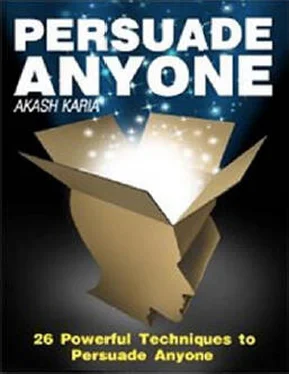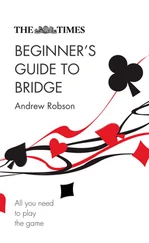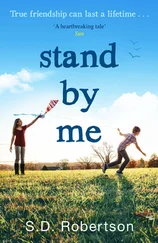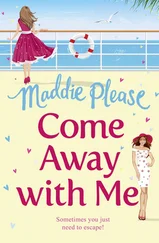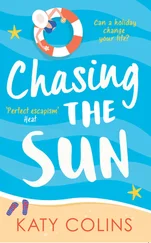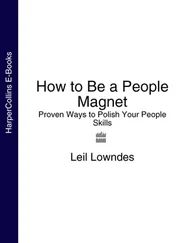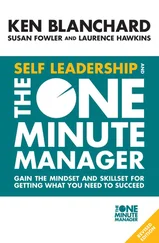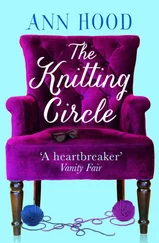Akash Karia - Small Talk Hacks - The People Skills & Communication Skills You Need to Talk to Anyone and be Instantly Likeable
Здесь есть возможность читать онлайн «Akash Karia - Small Talk Hacks - The People Skills & Communication Skills You Need to Talk to Anyone and be Instantly Likeable» весь текст электронной книги совершенно бесплатно (целиком полную версию без сокращений). В некоторых случаях можно слушать аудио, скачать через торрент в формате fb2 и присутствует краткое содержание. Год выпуска: 2015, Издательство: AkashKaria.com, Жанр: Старинная литература, на английском языке. Описание произведения, (предисловие) а так же отзывы посетителей доступны на портале библиотеки ЛибКат.
- Название:Small Talk Hacks: The People Skills & Communication Skills You Need to Talk to Anyone and be Instantly Likeable
- Автор:
- Издательство:AkashKaria.com
- Жанр:
- Год:2015
- ISBN:нет данных
- Рейтинг книги:3 / 5. Голосов: 1
-
Избранное:Добавить в избранное
- Отзывы:
-
Ваша оценка:
- 60
- 1
- 2
- 3
- 4
- 5
Small Talk Hacks: The People Skills & Communication Skills You Need to Talk to Anyone and be Instantly Likeable: краткое содержание, описание и аннотация
Предлагаем к чтению аннотацию, описание, краткое содержание или предисловие (зависит от того, что написал сам автор книги «Small Talk Hacks: The People Skills & Communication Skills You Need to Talk to Anyone and be Instantly Likeable»). Если вы не нашли необходимую информацию о книге — напишите в комментариях, мы постараемся отыскать её.
Small Talk Hacks: The People Skills & Communication Skills You Need to Talk to Anyone and be Instantly Likeable — читать онлайн бесплатно полную книгу (весь текст) целиком
Ниже представлен текст книги, разбитый по страницам. Система сохранения места последней прочитанной страницы, позволяет с удобством читать онлайн бесплатно книгу «Small Talk Hacks: The People Skills & Communication Skills You Need to Talk to Anyone and be Instantly Likeable», без необходимости каждый раз заново искать на чём Вы остановились. Поставьте закладку, и сможете в любой момент перейти на страницу, на которой закончили чтение.
Интервал:
Закладка:
For example, you might have a 30-second commercial that’s appropriate for a convention and another commercial that you use when you stop by a specific business to market your services.
Before you head out to a specific place, tailor your commercial for that location.
TECHNIQUE #3: MAKE YOUR COMMERCIAL MEMORABLE
Your 30-second commercial won’t be effective if no one remembers it. But how do you make sure that what you say isn’t forgotten? One way to do this is to use your words to paint a visual picture.
Have you ever been to a presentation that had wonderful visuals? Those pictures can help you to remember the speaker and what he or she discussed. But when you run into someone in a casual setting, you can’t show them a PowerPoint presentation.
Instead, you’ll need to use what you say to create a mental picture. Then later that person will be able to recall you – he or she may not remember exactly what you said specifically but will remember you.
How can you do this? It helps to actually ask your conversation partners to visualize something. You can ask them to visualize life without the problem that you can solve.
For example, one of the things I do best is help others learn to improve their public speaking skills. So I might say something like, “Imagine standing up in front of a crowd feeling at ease, polished, and confident.”
Do you have a picture in your mind? You can imagine yourself on a stage and how it would look and feel. This creates a visual memory.
Later, when someone realize they have a speech to give and they need some help, they’ll remember me as someone who can help them because of the visual memory that was created. They may not remember everything I said, but they got the message that I can help meet their needs.
TECHNIQUE #4: PRACTICE MAKES PERFECT
Once you’ve developed an engaging 30-second commercial, you’ll need to practice it. You don’t want to sound too rehearsed, but you also want to be able to quickly recall what you need to say.
Practice your commercial on your own and in the mirror, try it with friends, and then begin putting it into practice. You may stammer a little the first time you give your commercial when it really counts.
But the more you do it, the easier it will get and eventually you’ll feel confident and at ease. You’ll feel the words flow from you naturally.
TECHNIQUE #5: DON’T RELY TOO HEAVILY ON YOUR COMMERCIAL
It’s great to have a 30-second commercial. But what happens if you give your commercial and don’t have anything else to say that engages another individual in conversation?
While your commercial is an important way to introduce yourself, it’s really only the tip of the iceberg when it comes to who you are and what you do. Don’t rely so much on your commercial that you truly have nothing else to say in a conversation.
It’s important that you know yourself and the value of your services well enough that you can answer questions and continue a conversation. The commercial is just a jumping-off point to help you get the opportunity to say even more.
TECHNIQUE #6: LISTEN MORE THAN YOU SPEAK
One of the most important elements of your commercial is asking an open-ended question. Remember that when you ask the question you need to stop to listen to the answer.
You might feel anxious and be tempted to start thinking of what you need to say next. But it’s much better to really focus on what your conversation partner is saying instead. It’s okay to have pauses in conversation.
In the next chapter we’ll talk much more about active listening – it’s really one of the most important things when it comes to communication.
No one wants to feel like they’re not being heard when they speak. By becoming an active listener, you’ll help people to feel that you value them and that what they have to say is important to you. This can be one of the best ways to develop a good business and networking relationship – not to mention friendship.
Chapter 4
BECOME AN ACTIVE LISTENER

Have you ever had a conversation with someone but you could tell they weren’t listening to you? Maybe they kept looking down at their phone or you realized that they didn’t ask any questions about anything you said.
How did that make you feel? For most people it can be very disheartening to have a one-way conversation. You feel like you don’t matter and it’s unlikely that you’ll ever want to speak to that person again.
Being a great conversationalist often means doing more listening than talking. You want your conversation partner to know that you’re paying attention and that what he or she says really matters to you.
CONVERSING VS. CONNECTING
When you’re embarking on a conversation with someone new, think about your conversation as more than just words being exchanged. You want to look for connection with the other person.
We’ve talked a lot about your 30-second introduction and ways to break the ice. But if you get so stuck to those ideas you may miss out on the connection aspect of speaking with someone else.
It’s important to be engaged with the other person and not too focused on a “script.” Conversation starters are just a jumping-off point – but the meat of your conversation should be active listening.
But what does it really mean to listen actively? Let’s explore that further so that you can really apply it to meeting new people and developing key relationships. Getting into this habit will do more for building relationships than just about any other skill.
TECHNIQUE #1: NONVERBAL CUES
Most of the impact in any conversation comes from nonverbal cues rather than just what is said. You can do several important things to make sure you’re providing nonverbal cues that show you’re really listening.
Eye Contact
One of the best things you can do is make eye contact. When you’re looking directly at the person in front of you it shows that you’re focused on the conversation. But do not stare down your conversation partner and make him or her feel uncomfortable.
In fact, how much eye contact you make is something that can change depending on the person with whom you’re speaking. For example, someone who is really introverted might feel uncomfortable with too much eye contact.
But someone who is extroverted and enjoys engaging conversation may give you the license to make almost constant eye contact. You’ll need to pick up on the other person’s cues to decide what is best.
Head Nodding
When you nod your head in agreement it shows that you are listening and really hearing what is being said. If you nod your head almost constantly, though, it can have the opposite effect.
Save your head nodding for a time when you really understand and agree with your conversation partner. Don’t become a bobble head who nods without a pause. Have you ever spoken with someone who nods all the time? Did it look like they weren’t really listening? That’s the opposite of what you want to accomplish.
Smiling
How does it make you feel when someone smiles at you? For most people this can help a conversation to be more relaxed and comfortable. You don’t have to smile all the time, but peppering your conversation with plenty of smiles can go a long way to helping another person feel more open in a discussion.
Try This:
Читать дальшеИнтервал:
Закладка:
Похожие книги на «Small Talk Hacks: The People Skills & Communication Skills You Need to Talk to Anyone and be Instantly Likeable»
Представляем Вашему вниманию похожие книги на «Small Talk Hacks: The People Skills & Communication Skills You Need to Talk to Anyone and be Instantly Likeable» списком для выбора. Мы отобрали схожую по названию и смыслу литературу в надежде предоставить читателям больше вариантов отыскать новые, интересные, ещё непрочитанные произведения.
Обсуждение, отзывы о книге «Small Talk Hacks: The People Skills & Communication Skills You Need to Talk to Anyone and be Instantly Likeable» и просто собственные мнения читателей. Оставьте ваши комментарии, напишите, что Вы думаете о произведении, его смысле или главных героях. Укажите что конкретно понравилось, а что нет, и почему Вы так считаете.
